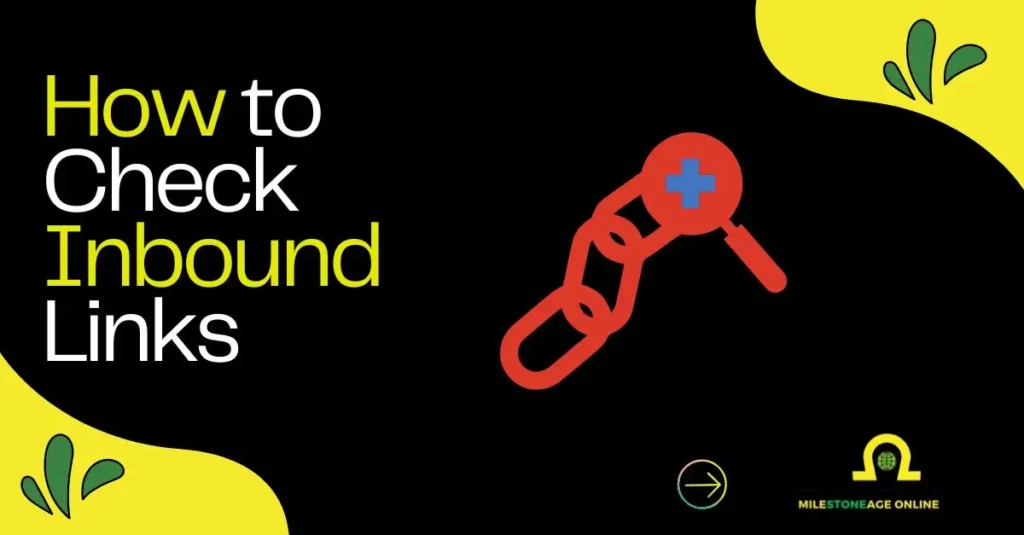Inbound links play a key role in boosting SEO and driving traffic to your site. Regular monitoring and evaluating these links will improve your search engine rankings.
- Use Google Search Console to track inbound links.
- Try free tools like Ahrefs Free Backlink Checker and Moz Link Explorer.
- Assess backlink quality using Domain Authority and Page Authority.
- Fix broken inbound links using a broken link checker.
- Redirect broken links to relevant, live pages.
By managing your inbound links, you can improve SEO and ensure better online visibility.
Introduction
Inbound links, or backlinks, are essential for improving your website’s SEO. They act as a vote of confidence from other sites, showing search engines that your content is valuable.
Checking inbound links regularly helps you stay on top of your SEO game. It’s vital to track which sites link to you, as well as the quality of those links.
The more quality links you have, the better your rankings will be. In this guide, we’ll walk you through how to check inbound links and evaluate their quality, using simple tools and methods to improve your SEO strategy.
How to Check Inbound Links for Your Website
Checking inbound links regularly is essential for good SEO. It helps you track link quality and quantity. Here are a few ways to check inbound links to your website:
Use Google Search Console to Check Inbound Links
Google Search Console offers a detailed overview of links to your website. It’s a great tool for monitoring backlinks.
- Access the ‘Links’ section in Search Console.
- Check ‘Top linking sites’ and ‘Top linking text’.
- Analyze link patterns and anchor text to find strong links.
This tool gives a clear view of which websites link to you. It also highlights how often your site is linked and the anchor text used.
Free Backlink Checkers for Quick Analysis
Several free tools can help you check inbound links without spending a dime. These tools are great for quick assessments.
- Broken Link Checker: Helps you identify dead or broken links quickly.
- Ahrefs Backlink Checker: Offers detailed insights into the quality and quantity of backlinks.
- DA PA Checker: This checks Domain Authority (DA) and Page Authority (PA) of linking sites.
- Traffic Checker: Measures how much traffic is driven by inbound links.
These tools allow you to stay on top of your link-building efforts and ensure you don’t miss any key backlinks.
How to Evaluate the Quality of Inbound Links
Not all inbound links are equal. Evaluating their quality helps you make sure they benefit your SEO efforts. Here’s how to evaluate inbound link quality:
Checking the Domain Authority of Inbound Links
Domain Authority (DA) plays a big role in link quality. DA indicates the strength of a website’s authority.
- High DA links: These are likely to boost your SEO performance.
- Low DA links: These may not help or could even hurt your rankings.
Using tools like Ahrefs or Moz’s Link Explorer, you can check the DA of websites linking to you. It’s a quick way to assess whether the links are from high-authority sites.
How to Use Google Search Console to Assess Link Quality
Google Search Console helps you identify the quality of links to your site. It’s essential for spotting problematic links.
- Identifying spammy links: Search Console lets you spot low-quality links.
- Disavowing harmful links: If you find bad links, you can disavow them.
- Focus on natural, relevant links: Only high-quality links should be a part of your strategy.
By using Search Console, you can ensure that the links driving traffic to your website are both high-quality and beneficial for your SEO.
Maintaining and evaluating inbound links regularly helps keep your website’s SEO strong. It ensures you’re getting valuable backlinks that help boost your rankings and site authority.
Best Tools for Monitoring Backlinks
Monitoring backlinks is vital for maintaining a strong SEO strategy. Using the right tools helps you track link quality, growth, and identify opportunities. Here are some top tools to help you with this process:
Ahrefs Backlink Checker for Comprehensive Insights
Ahrefs provides in-depth insights into your backlink profile, offering useful metrics that help you track your link growth.
- Track backlinks in real-time: Stay updated with any changes in your backlink profile.
- Measure the authority of linking domains: Check the strength of the websites linking to you.
- Monitor link growth trends: Watch how your backlinks grow over time, showing the effectiveness of your link-building efforts.
Ahrefs makes it easy to track and evaluate your backlinks, ensuring you can stay on top of your SEO game.
Use the Free Backlink Checker Tools
If you’re on a budget or just starting, several free tools are available to monitor your inbound links.
- Ahrefs Free Backlink Checker: Offers basic insights into your top backlinks.
- Moz Link Explorer: Helps you view your backlinks and assess the domain authority of linking sites.
- Ubersuggest: Provides an affordable option to track backlinks and monitor competitors.
These free tools are great for beginners or small websites that need to keep track of their backlink profile without spending money.
Fixing Broken Inbound Links
Broken links can hurt your SEO by creating a poor user experience. Regularly checking and fixing them is essential for maintaining good SEO health. Here’s how to deal with broken links:
Use a Broken Link Checker to Find Dead Links
A broken link checker helps you quickly find links that no longer work.
- Regularly scan your website for broken links: Set up periodic checks to identify any links leading to 404 pages.
- Fix or redirect broken links to improve user experience: Redirect users to relevant pages, ensuring they don’t encounter errors.
Checking for broken links is a simple step that can prevent negative effects on your SEO and user experience.
Fixing the Link and Its Impact on SEO
Correcting broken inbound links boosts your website’s credibility and performance.
- Redirect broken links to relevant pages: Use 301 redirects to guide users to active content.
- Ensure the inbound link points to live, valuable content: Keeping links fresh and relevant helps maintain your site’s authority.
Fixing broken links not only improves user experience but also ensures you don’t lose any SEO value from dead links.
Keep Your Backlinks Healthy for SEO Success
Maintaining healthy inbound links is key to strong SEO. Regular checks and quality assessments will help you boost your website’s authority.
Fix broken links to improve user experience and SEO performance. Focus on quality backlinks for long-term growth.
Start tracking your inbound links today and boost your SEO!
FAQs
What are inbound links?
Inbound links are links from other websites to yours. They help improve your site’s SEO.
How can I check inbound links to my website?
You can use tools like Google Search Console, Ahrefs, or free backlink checkers to see who links to your site.
Why are broken inbound links bad for SEO?
Broken inbound links lead to error pages, hurting user experience and lowering your site’s SEO. Fix them regularly.






